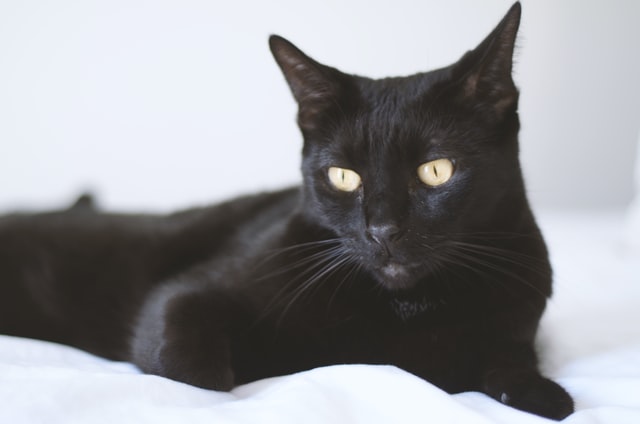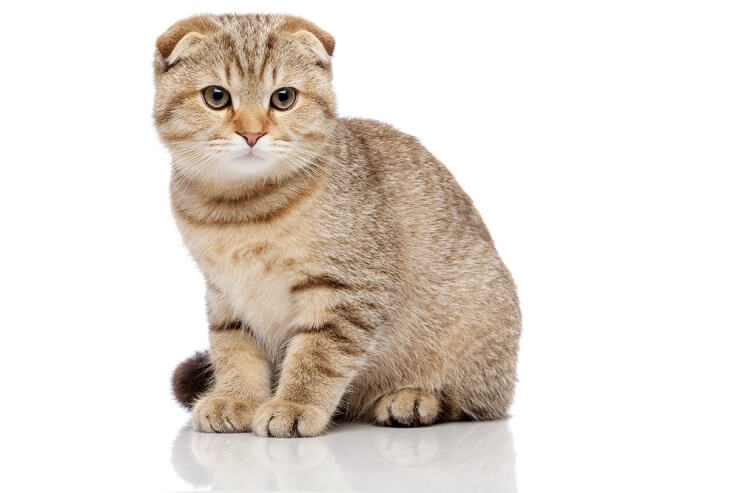The Ultimate Guide to Cat Fur Colors, Patterns & Markings
This page contains affiliate links. We may earn money or products from the companies mentioned in this post through our independently chosen links, which earn us a commission.
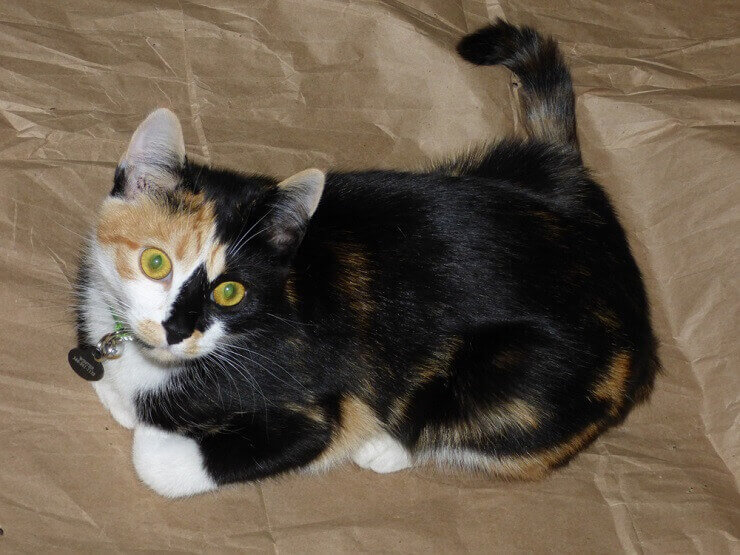
Fur is more than a symbol of beauty in cats. It also plays an important role as it helps regulates your furball’s body temperature and protects their internal organs.
A cat may also use their fur as a communication tool. For instance, a cat may make their hair stand on end when they’re agitated or flatten their whiskers against their face when they’re afraid.
Cats come in all fur colors, patterns, and markings. Also, depending on the cat breed, the fur may be long, short, or curly.
Cat Fur Layers
Most cats have two or three layers of fur in their coats or what we normally refer to as double and triple coat. Some other cats like the hairless Sphynx only have a single layer of fur.
In addition to the fur layers in their coats, cats also have another type of fur called vibrissae or whiskers.
Each layer of fur serves a specific function for your feline as explained below.
#1 Guard Fur
Guard fur is the thick and stiff hairs found on your cat’s outer coat. These hairs are the longest and form the protective outermost layer of your cat’s coat.
The guard layer of fur protects your furball from wet and cold weather conditions by repelling water. It also blocks the sun’s radiation from reaching your cat’s skin.
The guard fur is what you see standing on end when your cat feels threatened or angry.
Notably, kittens don’t have guard hairs but the layer appears as they grow older.
#2 Down Fur
Down fur also referred to as the undercoat is a soft, thick, and fluffy layer of fur that is closest to the cat’s skin. It keeps your cat warm by insulating her body. The thickness of this layer varies based on the cat breed and the environment.
Some cats such as the Devon Rex have a layer of down fur while others like the Javanese don’t have this layer.
Notably, cats living in colder climates tend to have thick down fur compared to the ones living in warmer places. The thick undercoat provides extra insulation for cats during cold weather. The down fur is also what cats shed during summer.
#3 Awn Fur
Awn fur is part of your feline’s topcoat. It’s what makes the bulk of the hair we see in a cat. Awn hair is courser than down hair and has darker tips. Awn hair partially protects the down hair and keeps the cat insulated. This layer is also responsible for your cat’s coat coloring and pattern.
In some cat breeds, awn hairs are the same size as the guard hair while in others such as the Manx cat, this layer is longer and thinner than the outer guard layer.
#4 Whiskers

Credit: Gayatri Malhotra
Whiskers also referred to as vibrissae are made of keratin. They are stiff, long, thick hairs found on a cat’s face. They are located on either side of the nose and below the eyes and chin. Cats also have whiskers on the edge of their lower legs and their eyebrows. Whiskers are more deeply rooted in your cat’s skin than other layers of fur.
Whiskers are extremely sensitive and act as sensory organs that are attached to nerve endings. They aid your cat to navigate through dark areas, determine the space between objects, and even sense if a predator is approaching.
Also, whiskers can help reveal your cat’s mood. For instance, an excited cat will have his whiskers pointed forward while a threatened cat will pull his whiskers around his face.
Don’t trim or touch your cat’s whiskers as they’re highly sensitive. Cutting them also reduces your cat’s confidence and their ability to move around.
Four Types of Cats Fur
Cats’ fur varies in length, texture, and abundance. Any of these fur features will affect a cat’s appearance differently.
Let’s look at the most common cat fur types.
#1 Long-Haired Cats
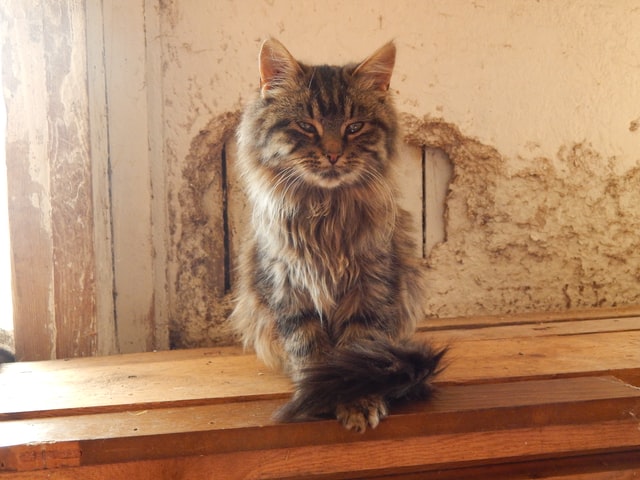
Credit: Maddy Weiss
Long-haired cats have a double coat made of an undercoat and a topcoat. These two layers provide protection and keep the cat insulated and warm. The length of the hairs for long-haired cats can grow between 1.5 to 5 inches depending on the breed.
The longest cat hair ever recorded was 9 inches long, belonging to a Persian-Himalayan mix breed. Examples of long-haired cat breeds include the Maine coon, ragdoll and the Norwegian Forest Cat.
Cats with long hair require regular brushing and grooming to prevent the hair from matting and tangling. Long-haired cats come in different coat colors and patterns.
#2 Crimped Fur
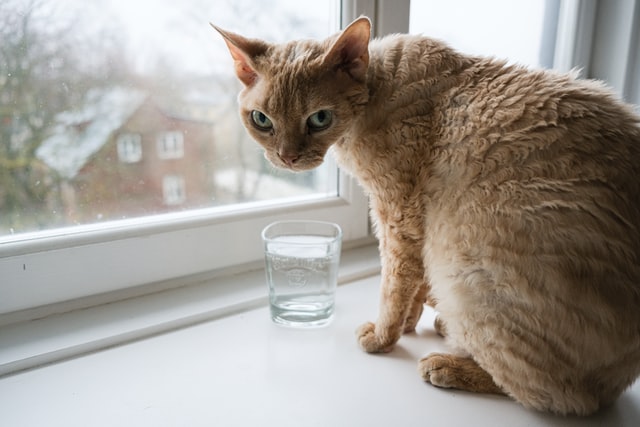
Credit: Külli Kittus
Crimped or curly fur is rare and only found in a few cat breeds like Devon Rex and LaPerm. Curly hair is a result of a genetic mutation called rex mutation.
Crimped furred cats have a layer of an undercoat without a covering topcoat. Their soft curly coat is predominately made of down hair. These cats shed less which is why they’re referred to as low maintenance.
#3 Short Fur
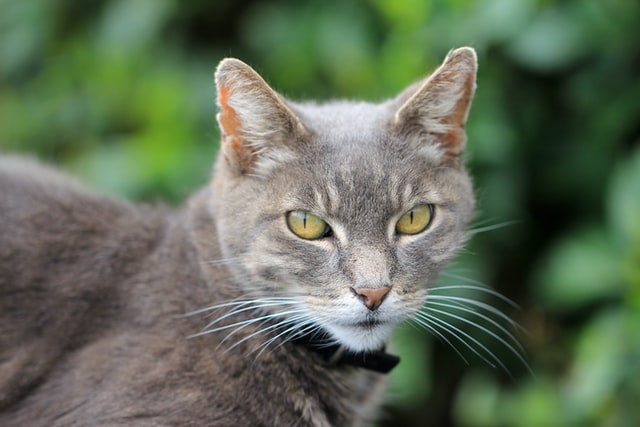
Credit: Sandy Millar
Short fur is the most common coat type among domestic cats.
Short-haired cats have double-layered fur made of a topcoat and an undercoat. Their hair can grow up to 2 inches long.
Hair maintenance for short-furred cats is relatively easy as they don’t shed much.
#4 Hairless
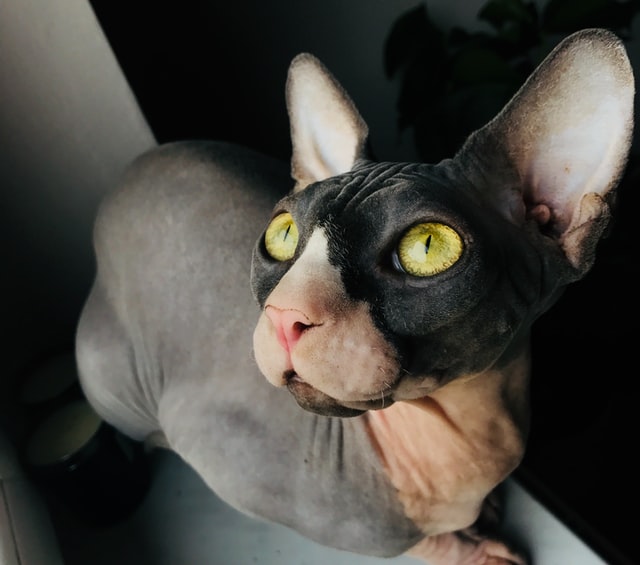
Credit: Hanna Listek
Hairless cat breeds include Sphynx, Bambino, Donskoy, and Peterbald. Their hair is soft and feels like suede or velvet when touched. These breeds are not actually hairless but they have very short hair and a fine coat that has a single layer.
Hairless cats love to snuggle to keep warm. If you have a hairless cat, you need to provide enough warmth and also bathe them weekly to remove body oil buildup.
Buy your hairless feline enough cat sweaters or blankets during winter and dress them up when going outside to protect their skin from sunburns during summer.
Cat Fur Patterns
A feline fur pattern is what makes your gorgeous cat stand out. The main colors found on most cats’ coats include white, black, red (ginger), blue, grey, cream, brown, cinnamon and fawn. These beautiful colors may appear on a cat’s coat as a single color or a mixture.
Let’s look at the different coat colorations and patterns that make cats unique and stunning.
#1 Solid Coats
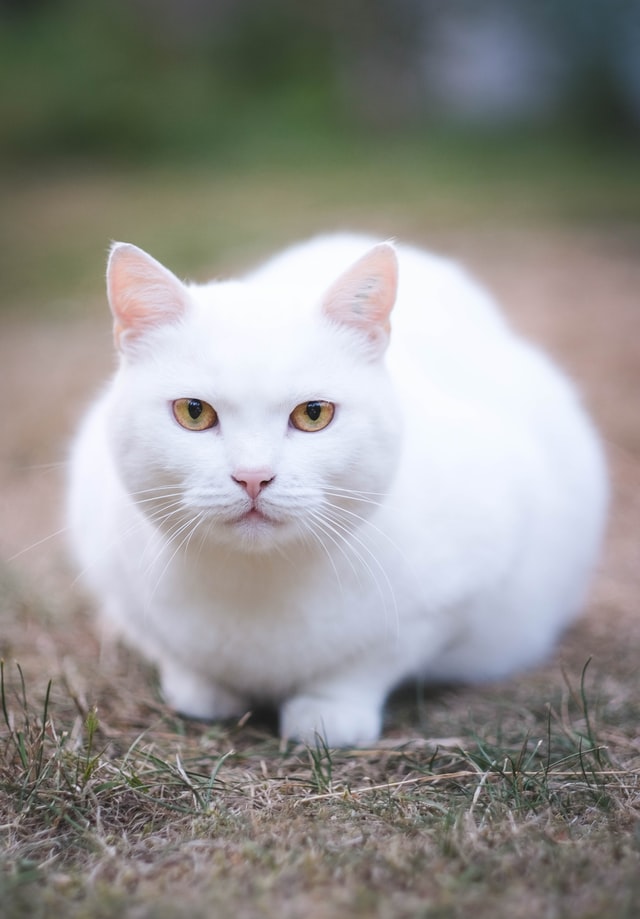
Credit: Max Sandelin
A cat with a solid coat has one color on her coat. These cats have no markings or any hairs that have a different color.
There are several solid colors found on most cats’ coats but the most common ones are black, gray, and white.
Although solid coats are not common it’s even rarer to find a cat with chocolate, cinnamon, lilac, cream, smoke, fawn or chinchilla solid coat.
#2 Bi-Color Coats
A Bicolor cat also referred to as piebald has a white color and one other primary color on her coat. This coat type is a result of the white spotting gene. Common bi-colors are red and white, blue and white, white and brown, cream and white, and black and white. Bicolors may also have tabby patterns.
Depending on the secondary color and the position of the color on a cat’s coat, bi-colored cats may have different names.
For instance, standard or true bicolor cats have equal amounts of white and other coloration on their coat. If a bicolored cat has more white than another color on her coat, she is said to have a van pattern. The majority of the van pattern is found on the head, ears and tail.
Bi-colored cats with random spots are called Magpies while those with colored heads and backs are called cap and saddle. White cats with small random patches and spots are called harlequins while black cats with white coloring on their faces, paws, and bellies are called tuxedo cats.
The bicolor coat is common in mix-breed cats.
#3 Tabby Coat
Tabby is the most common coat pattern in domestic cats. The main tabby patterns are mackerel, spotted, classic, and ticked.
Mackerel tabbies also referred to as stripped or fishbone tabbies are the most common type of tabby cats. These cats have light orange or gray undercoats with continuous dark vertical stripes running from their spines to bellies.
Classic tabbies are also known as blotched or marbled tabbies. These cats instead of stripes have swirls or blotches on their bodies.
Spotted tabbies have distinct spots of different sizes and spacing on their coats. The spots can either be oval, circular or rosettes. Their legs and tails may be striped. Maine coons and Bengals are examples of cat breeds with spotted tabby coats.
Ticked tabbies have lighter color shades at the base of their coats and darker coloring at the tips of their fur follicles. These cats are covered by agouti hairs- single strands of hair with bands of different colors. Their legs and tails may be striped. Somali and Abyssinian cats are two cat breeds that often have ticked tabby coat patterns
#4 Tri-color Coat
Calico cats are also called tricolor cats as they have a combination of three colors on their coats. The most common color combinations for these cats are white, black, and orange. They can also be found in diluted colors like cream, blue-black, brown and red.
For a cat to have a calico coat, they must have two X-chromosomes. This explains why most calico cats are female.
#5 Tortoiseshell Coat
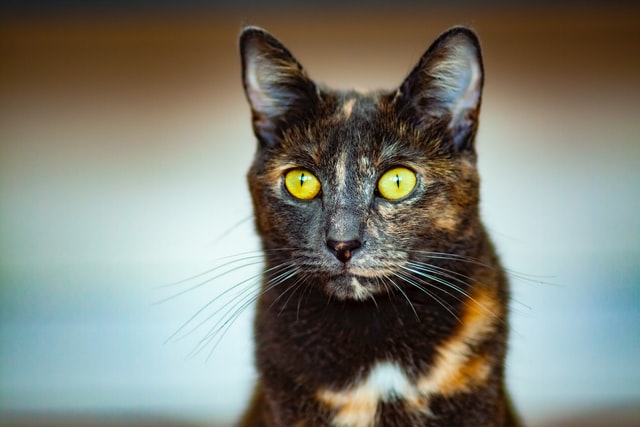
Credit: Aleksandr Rogozin
Tortoiseshell cats have a mixture of ginger-red and black fur. Some of them also have fur with diluted colors of cream and grayish-blue. This coloration can either appear in patches or as a brindle pattern. Torties as they are sometimes called, have little or no white hair.
The tortoiseshell pattern is mainly seen in female cats and it’s easy to recognize. Just like calicos, male torties are rare and are usually sterile.
Examples of cat breeds with this coat pattern include the American Shorthair, Cornish Rex, British Shorthair, Ragamuffin, Persian, and Maine Coon.
#6 Torbie Coat

Torbie, the short form of tortoiseshell-tabby is a mixture of tabby stripes and the tortoiseshell pattern.
These cats are also referred to as patched tabbies as their tabby coat has patches of black, cream, grey or red. The torbie coat is a distinct and relatively rare pattern.
#7 Color Point Coat
Color-pointed cats have light-colored bodies with darker colorations on their faces, ears, paws and tails. Color point coats develop due to a genetic mutation that leads to temperature-sensitive albinism.
Typical color-point markings are seal-point, blue-point, chocolate-point, and lilac-point. Other markings are tortie-point, flame-point and lynx-point.
Notably, color pointed cats are born without these distinctive markings but the markings develop later as these felines age. Most colorpoint cats have blue eyes.
Cat breeds like Siamese, Ragdoll, Himalayan, British Shorthair, Birman, Ragamuffin, Balinese and Sphynx have color point coats.
In closing, both genetic mutation and selective breeding have resulted in wonderful cat colors and patterns. As mentioned, some of the above patterns and colors are common while others may be rare.
Whether your furball has a rare or a common coat pattern, always appreciate their uniqueness!

